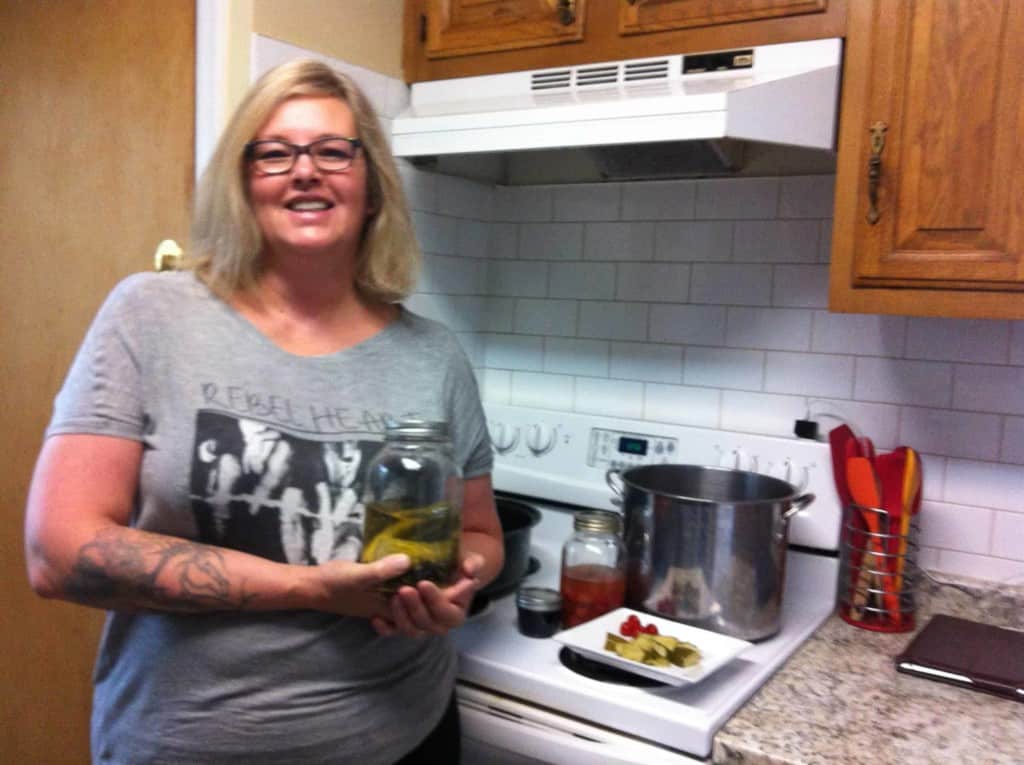Preserving and canning food fills the pantry
The process of canning food is simple: food is sealed in clean, sterilized jars, then heated to kill any remaining microorganisms. You can fill a pantry with food that is good for a year or more.
Home canning used to be commonplace, but the process has become intimidating for many. But Virginia Potkins, an Alberta Avenue resident, encourages us all to give it a shot—generations of families have been safely preserving their food for hundreds of years.
“I grew up on a farm in Northern Alberta, Spirit River. My family had a large garden and every year my stepmother and grandmother would have a week of canning. Everything: sauerkraut, pickles. We weren’t very well off, so that was our food for the winter.”
Potkins still cans once a year: pickles, jams, sauces, and soups. Despite the availability of store-bought canned goods, she finds canning produce from her own garden to be better.

“For me, I’ve always had a passion for cooking, and I’m involved with the community garden. It gives me a sense of accomplishment, and I like to experiment. This year, I did a cherry tomato roasted tomato soup. Everything tastes better when you make it yourself.”
It’s also quite economical. You can purchase canning kits from stores like Canadian Tire, but you don’t need much in the way of special equipment.
“I don’t have professional equipment,” said Potkins. “I have a huge stock pot, and I sterilize jars in a roasting pan. It works the same. You can get jars, rings, and lids at Superstore or Canadian Tire. You need vinegar, salt, spices for pickles.”
You’ll also need wire racks for the jars to rest on in the pot and tongs to move them in and out of the boiling water. You can find jars by the case at Superstore, Canadian Tire, or the Italian Centre Shop, or you can use second-hand jars if they have no chips or cracks (you will need new lids every time).
“When you break it down with the ingredients and equipment, it’s pretty cheap. And you can go through a jar of pickles every couple of weeks.”
Potkins will complete large batches of canning and trade with her friends, and finds other ways to preserve foods that aren’t easily canned.
“I blanch beans, beets, and beet greens and freeze them. And I have so much kale this year,” she said. And canning and preserving means having veggies available all winter. Jars of preserves and a freezer full of produce are convenient when you haven’t had time to shop.
As long as the basic rules are followed (keep everything clean, boil the jars for the recommended amount of time), the sky’s the limit. Potkins said the important thing is to just get started.
“Experiment! There are so many recipes. Just Google them. It can be intimidating, so you should reach out to someone who has experience and watch them, then you can share the work and the products. There are thousands of cookbooks, Pinterest, family recipes. If you’re thinking about doing it, just jump in. If it doesn’t work, it doesn’t work.”
Helpful links:
canada.ca/en/health-canada/services/general-food-safety-tips/home-canning-safety.html
bernardin.ca/en/howtoguide.htm
Featured Image: Canning food is easy and economical. | Virginia Potkins







